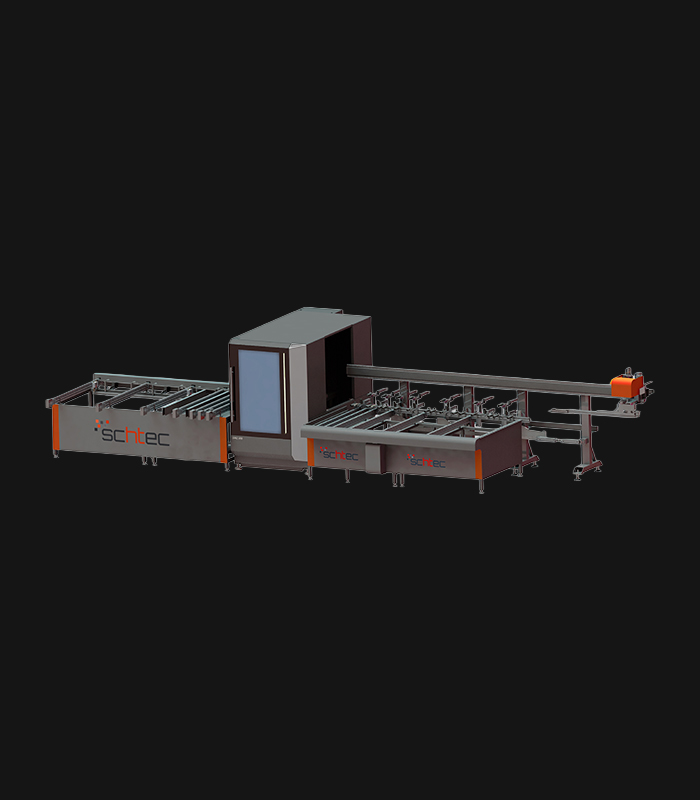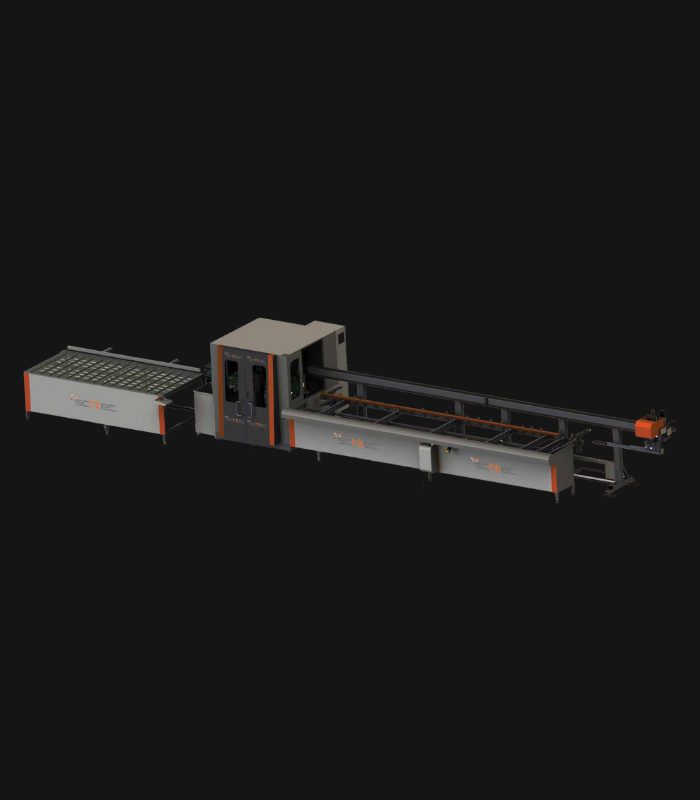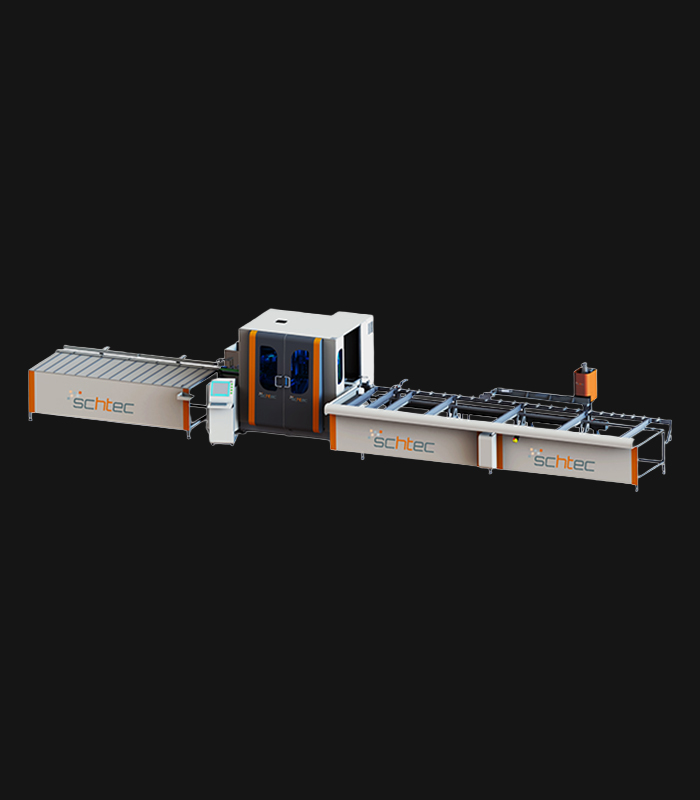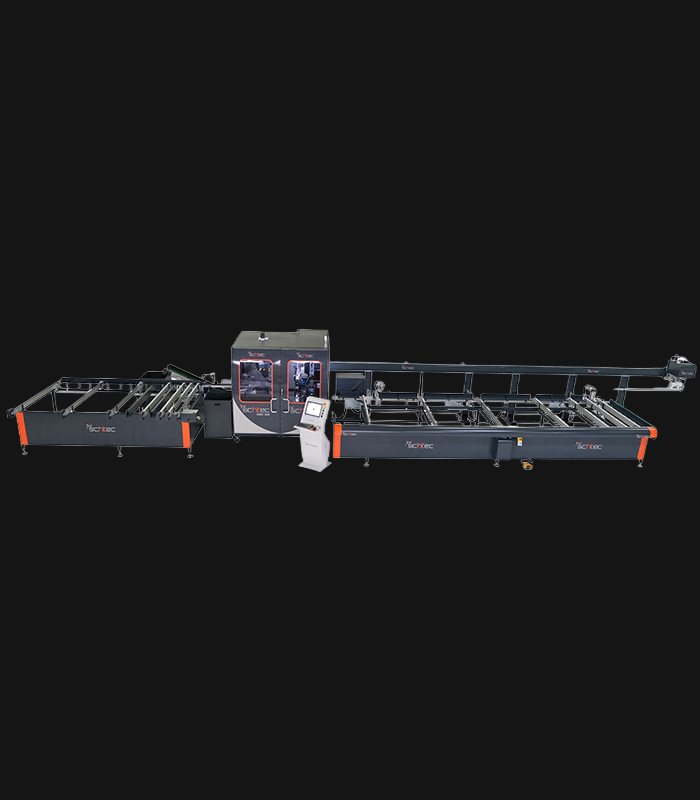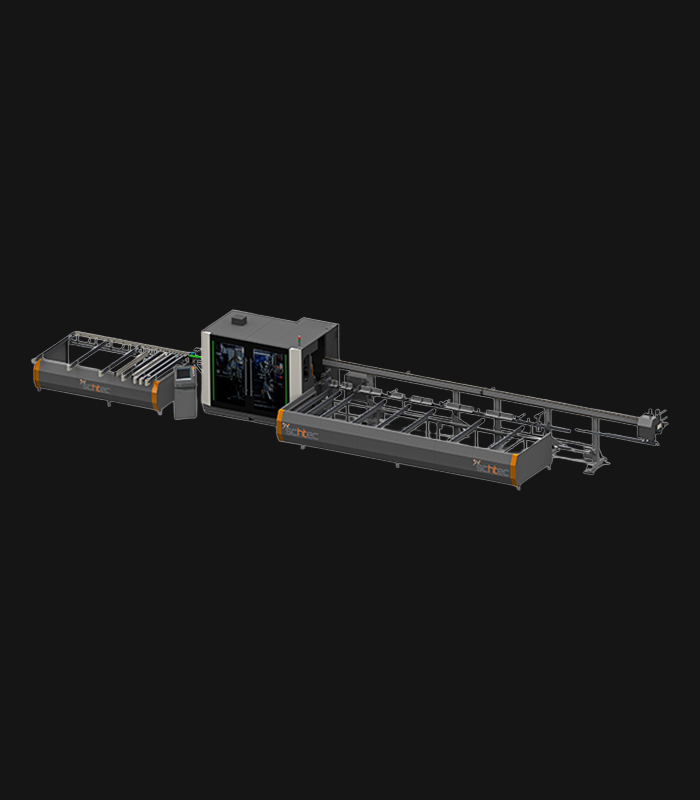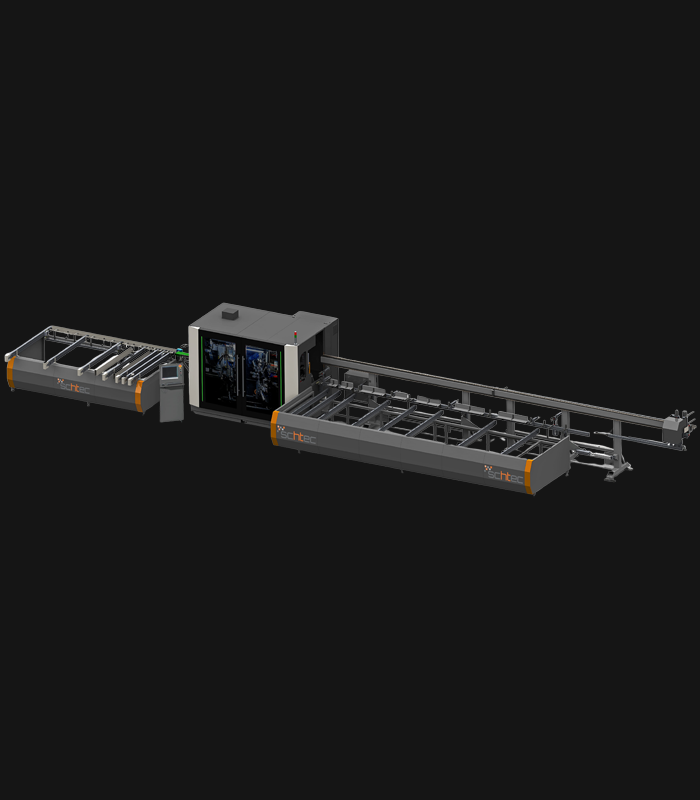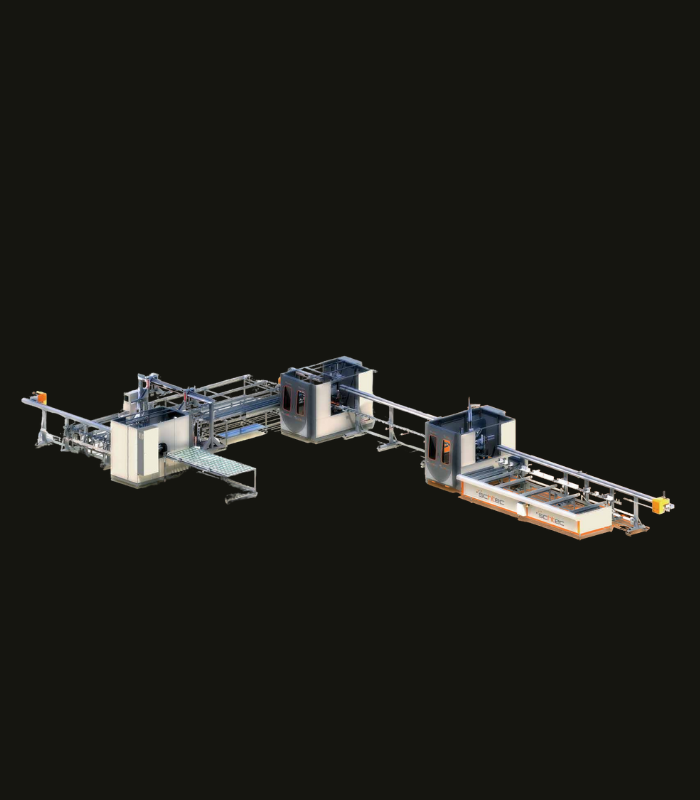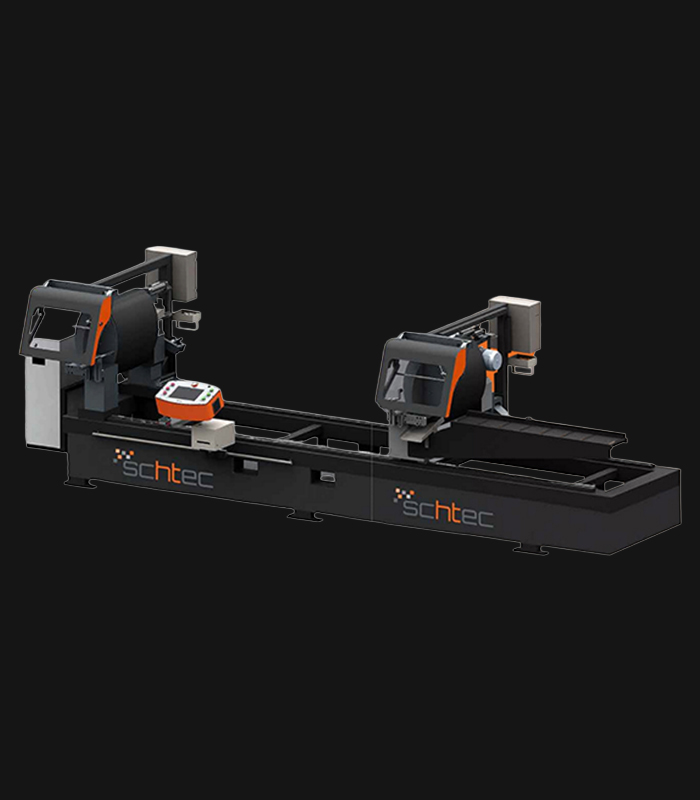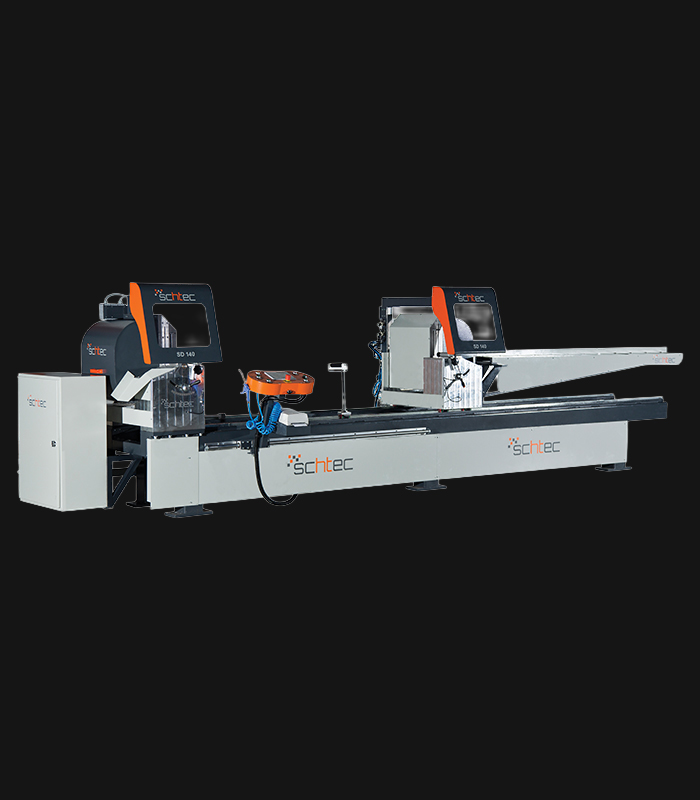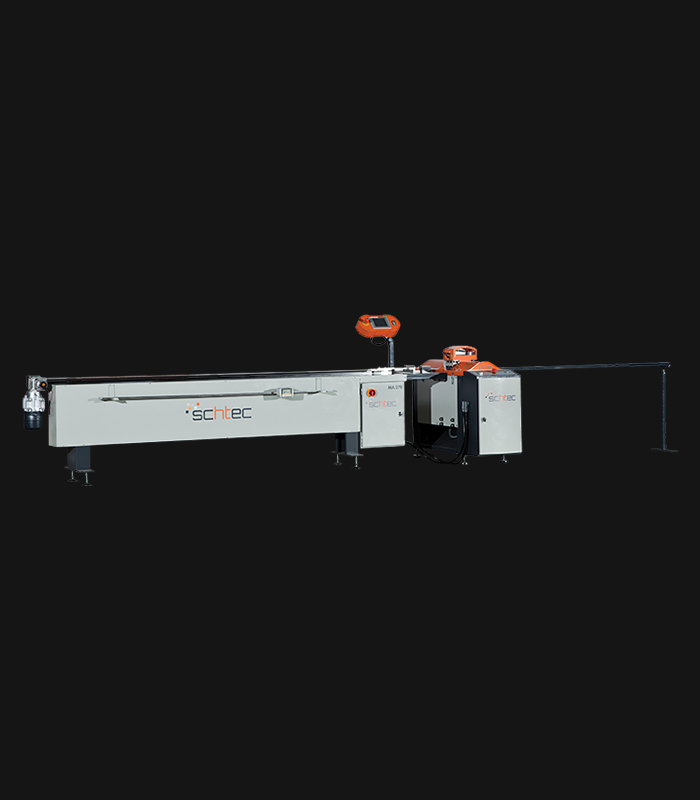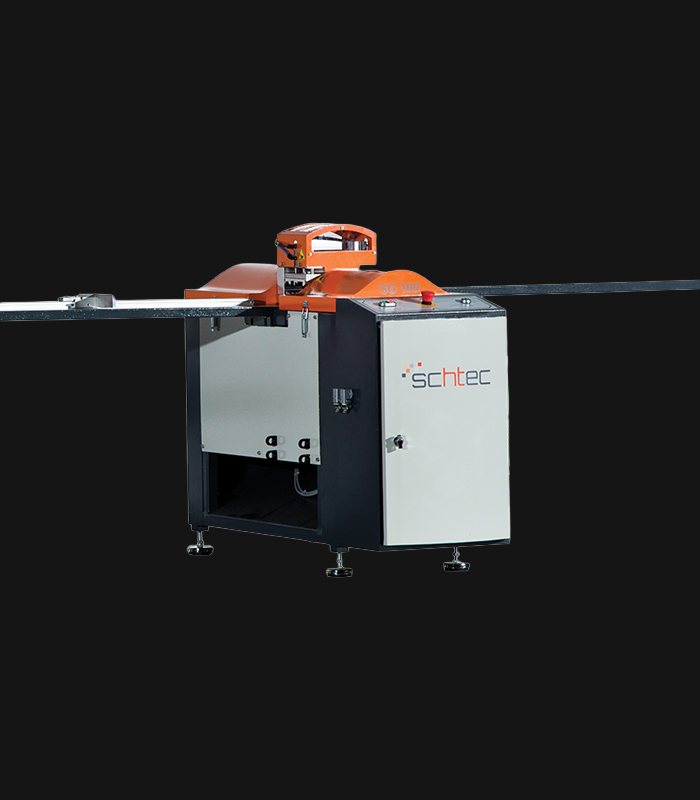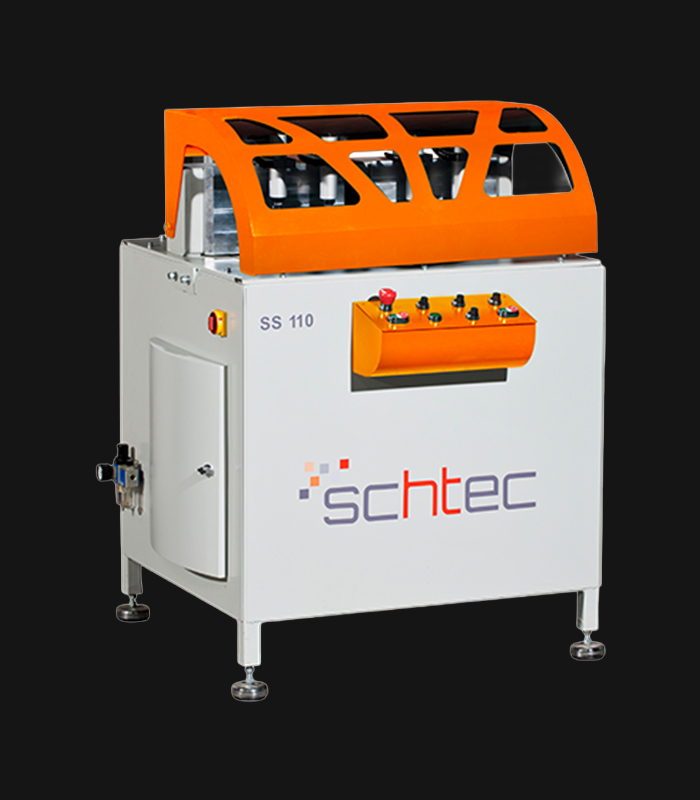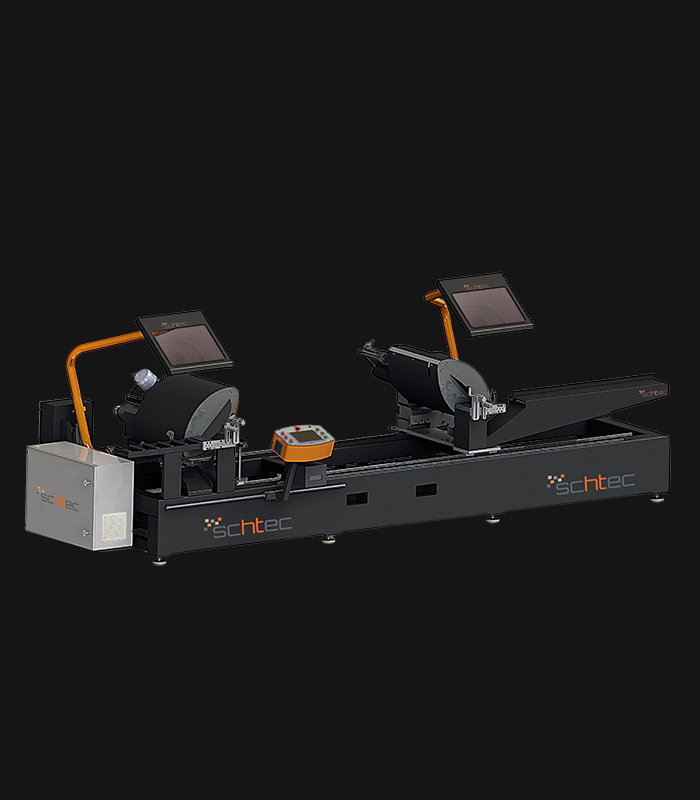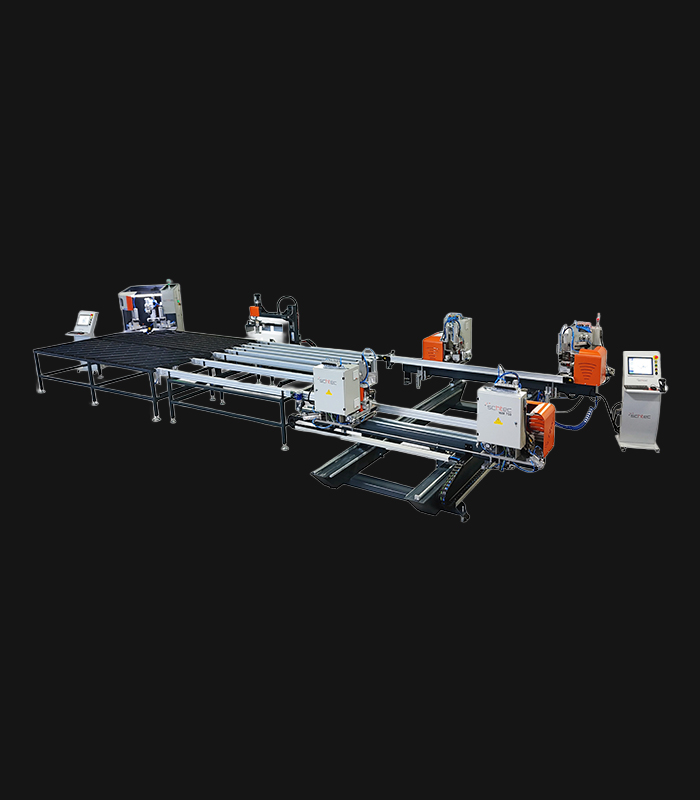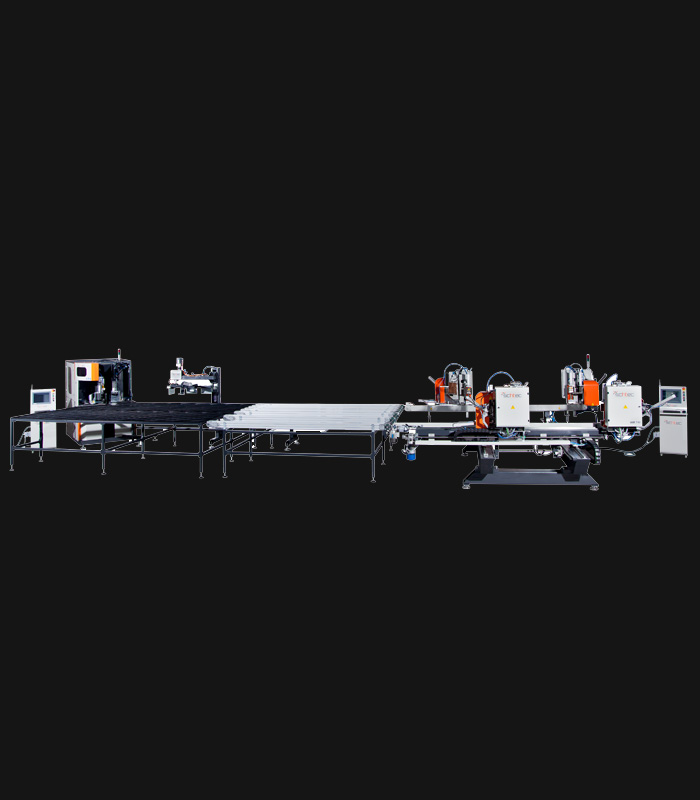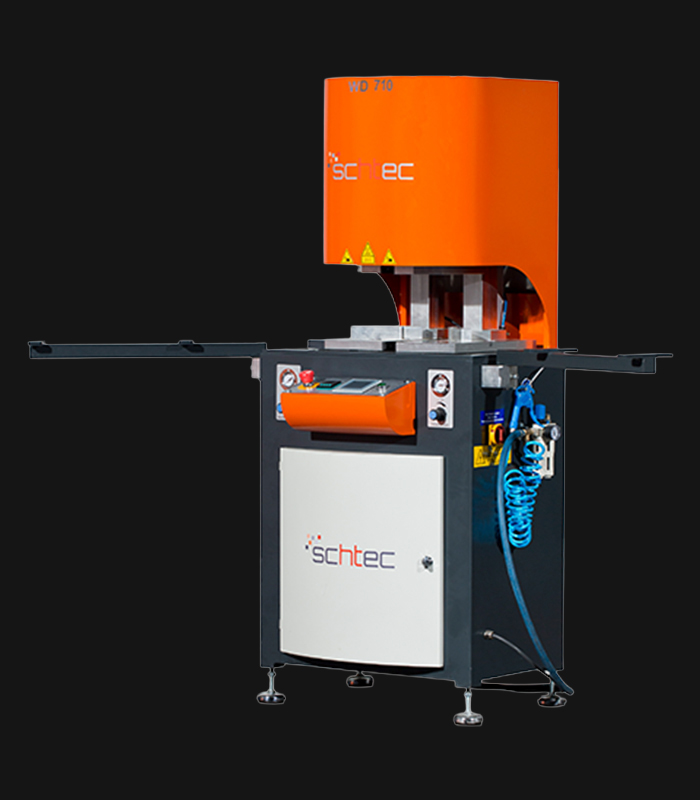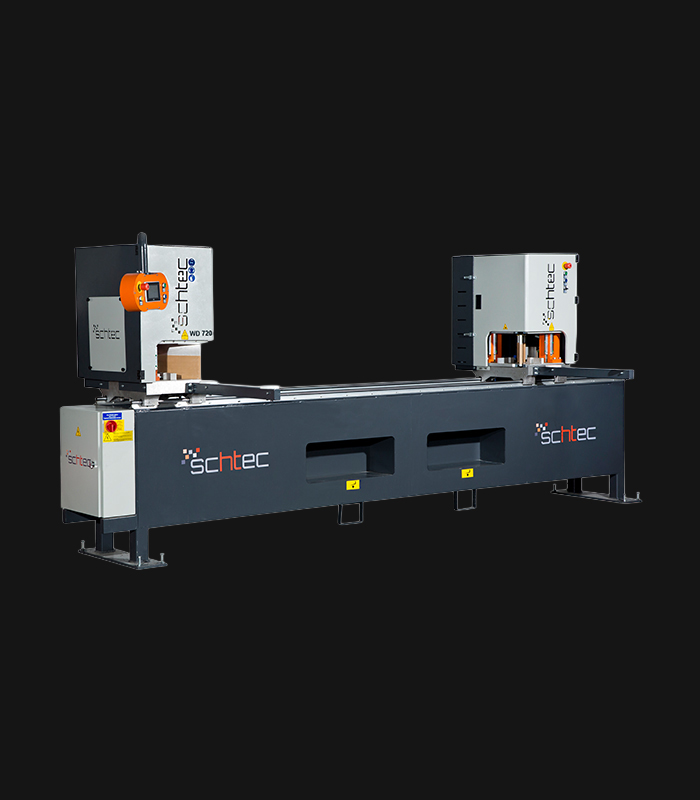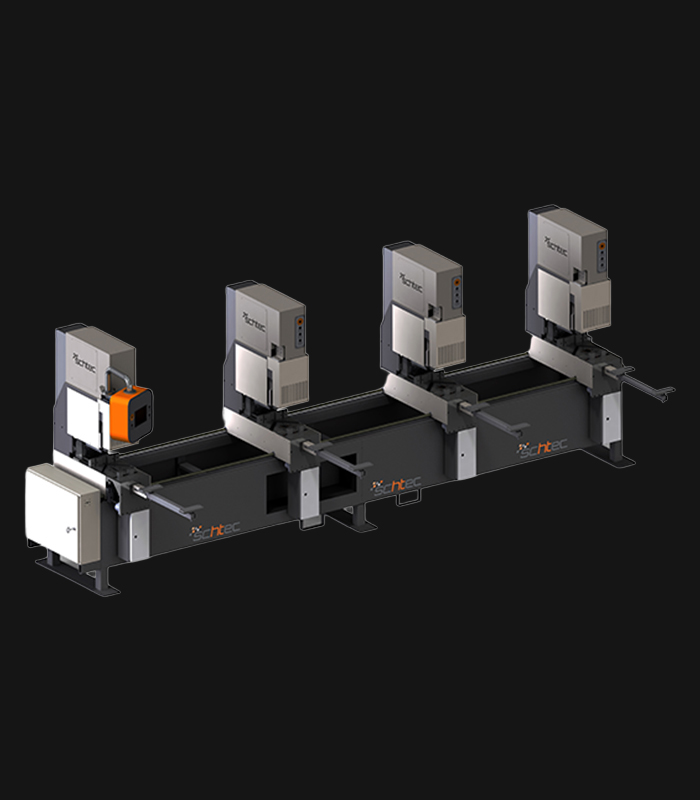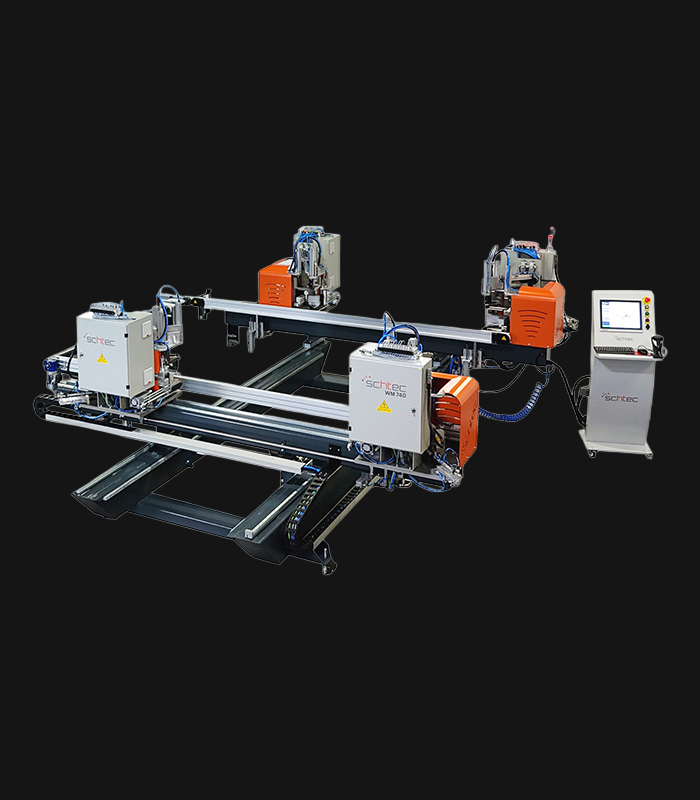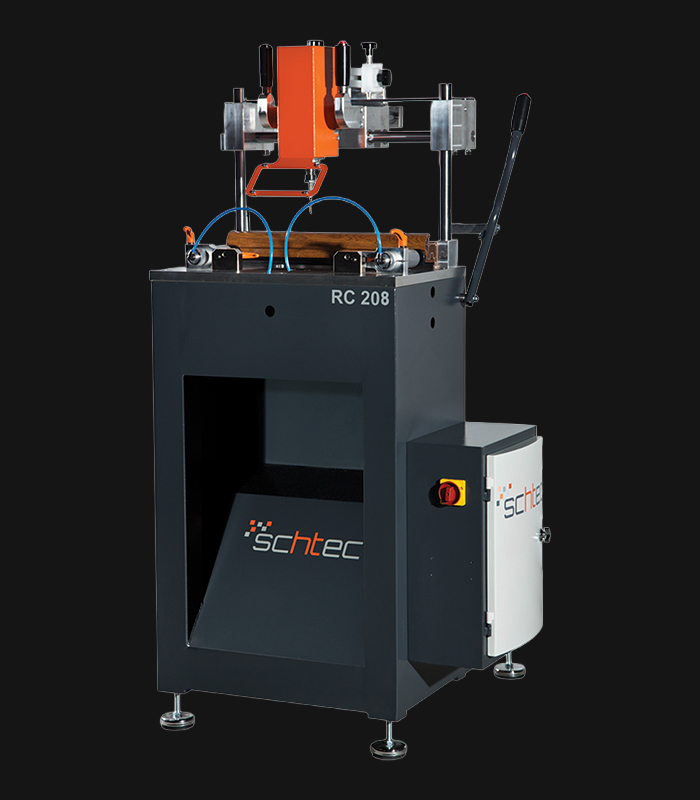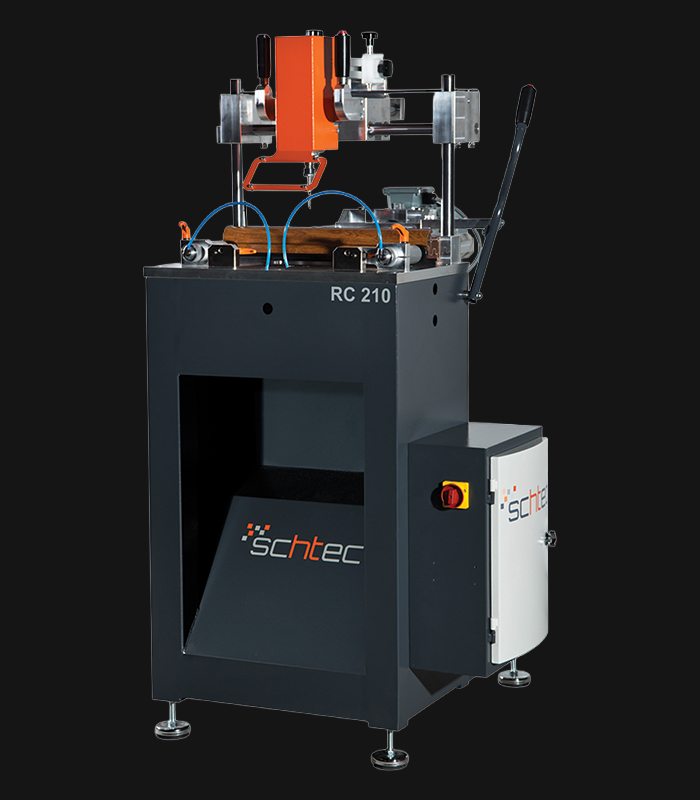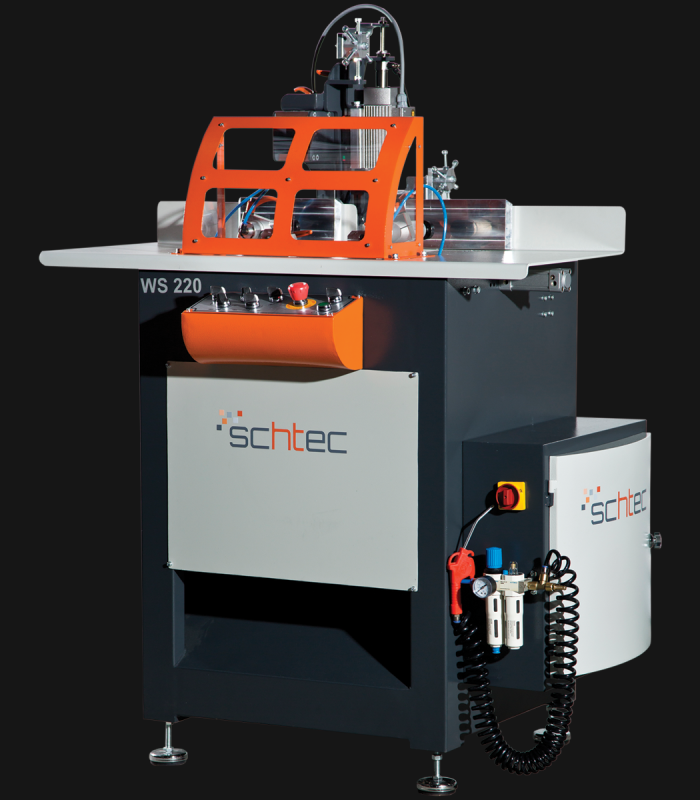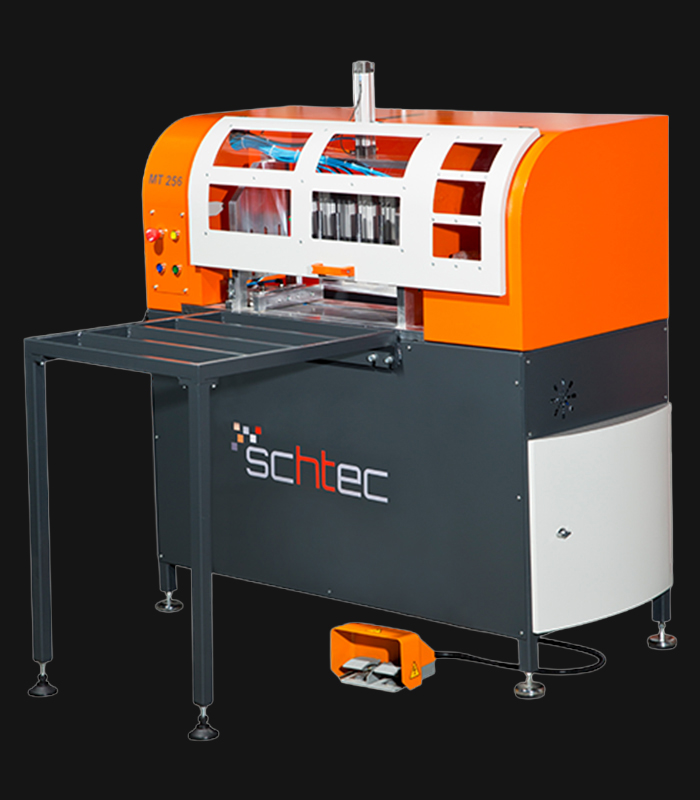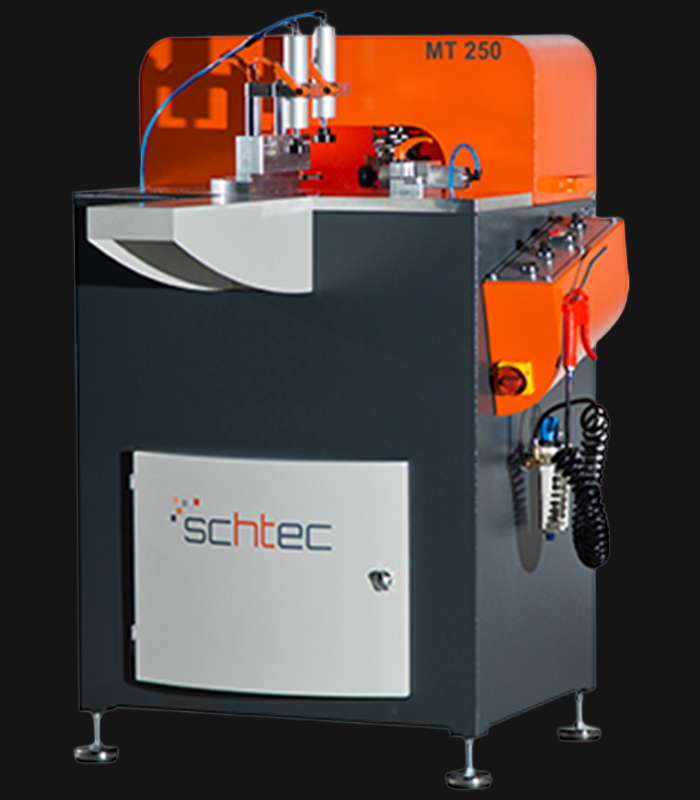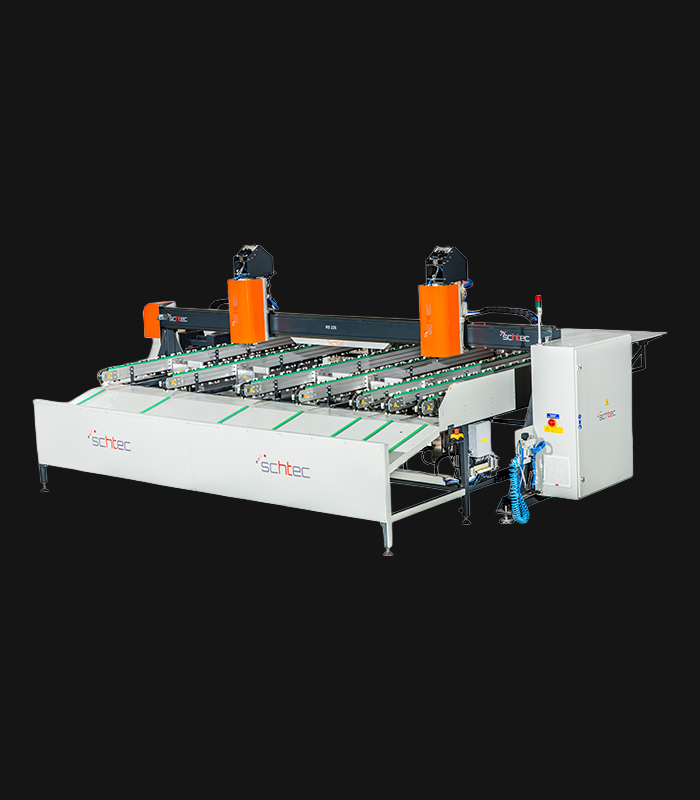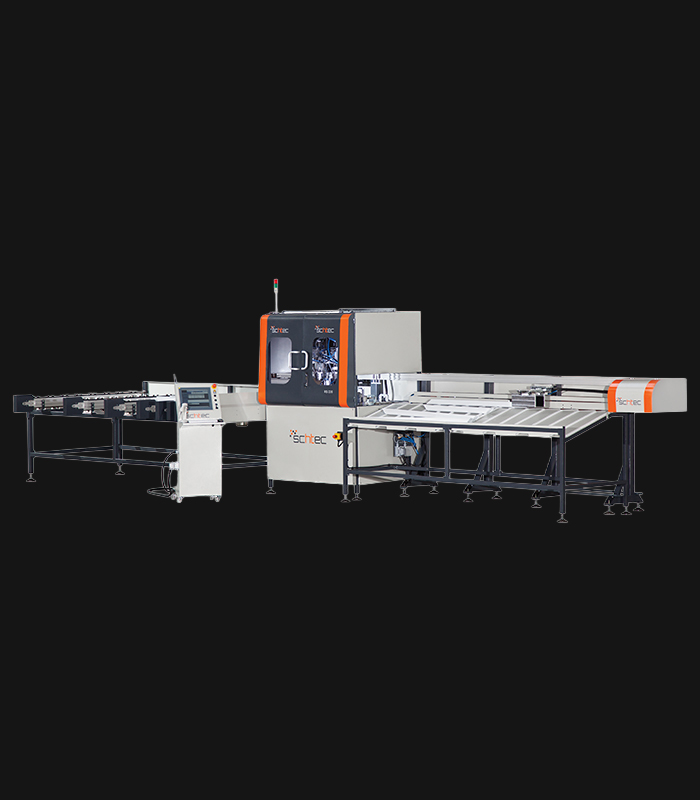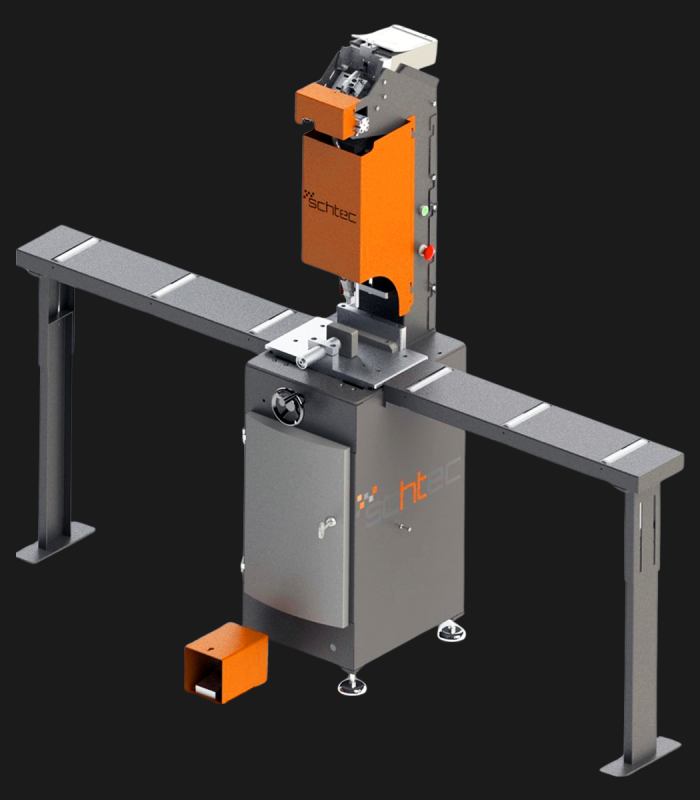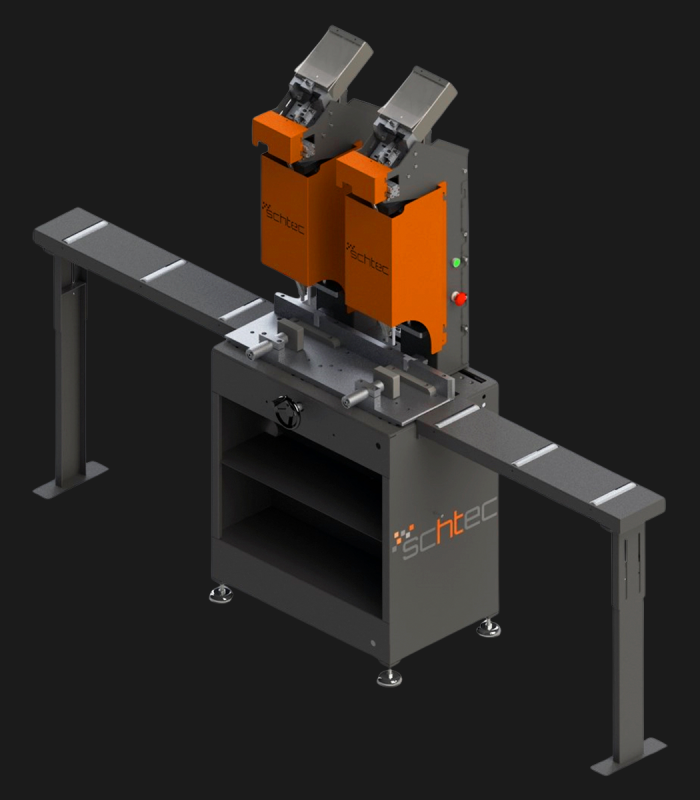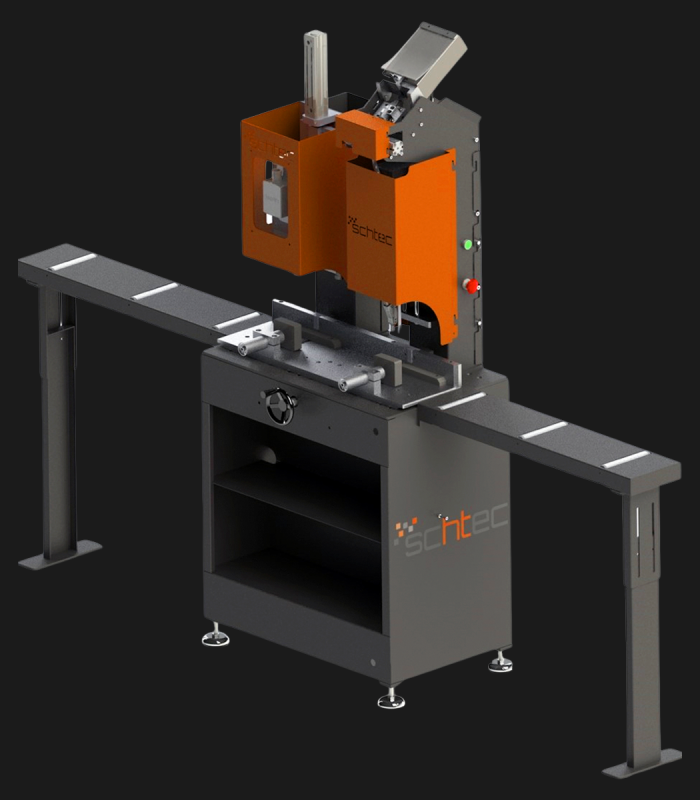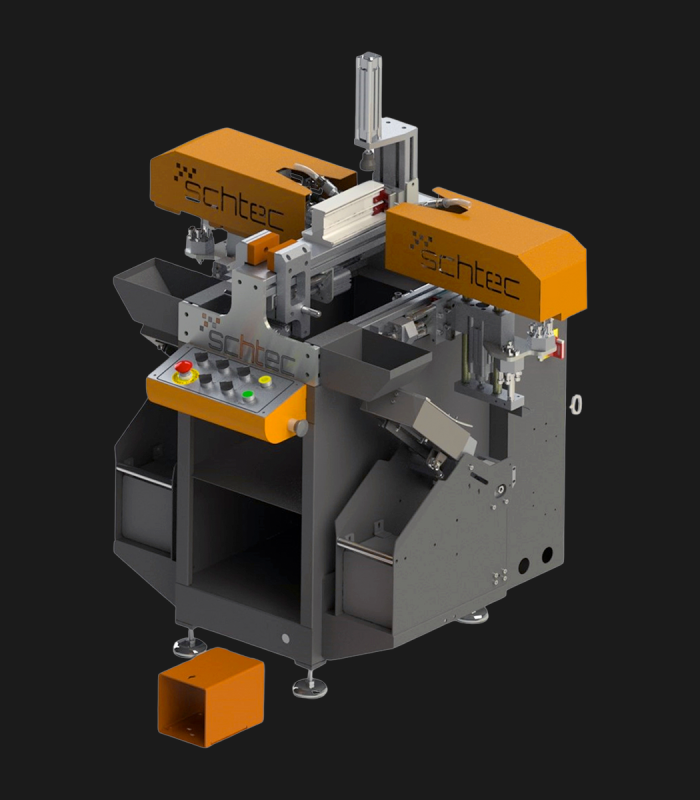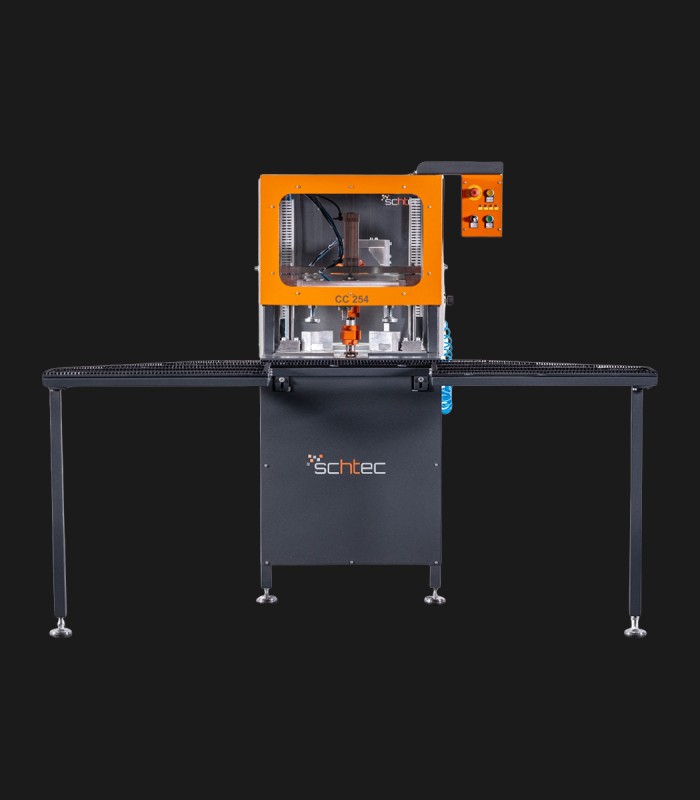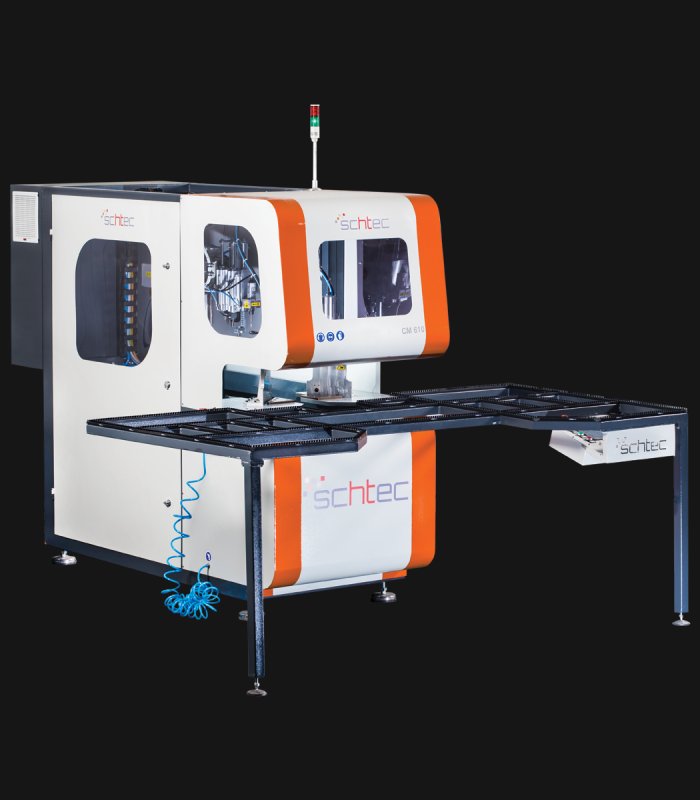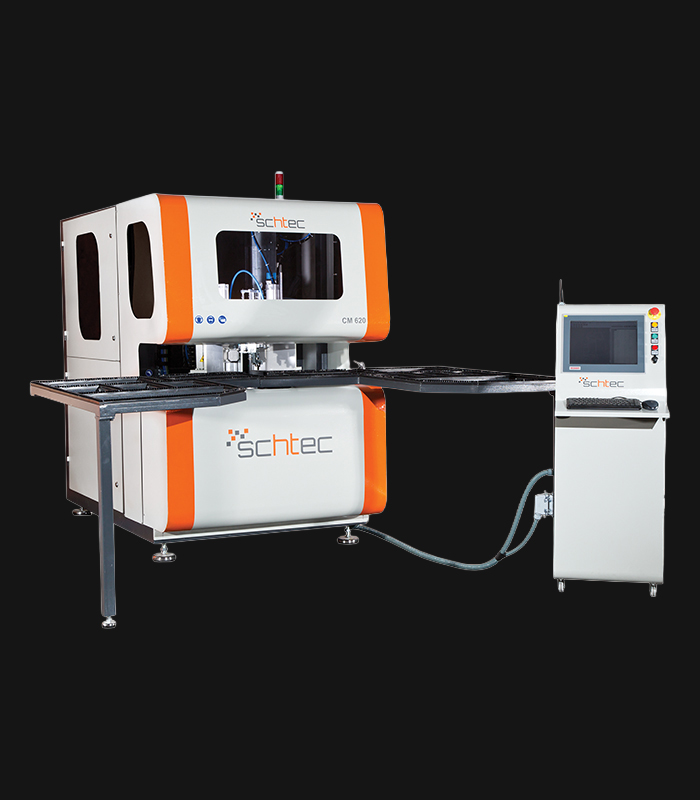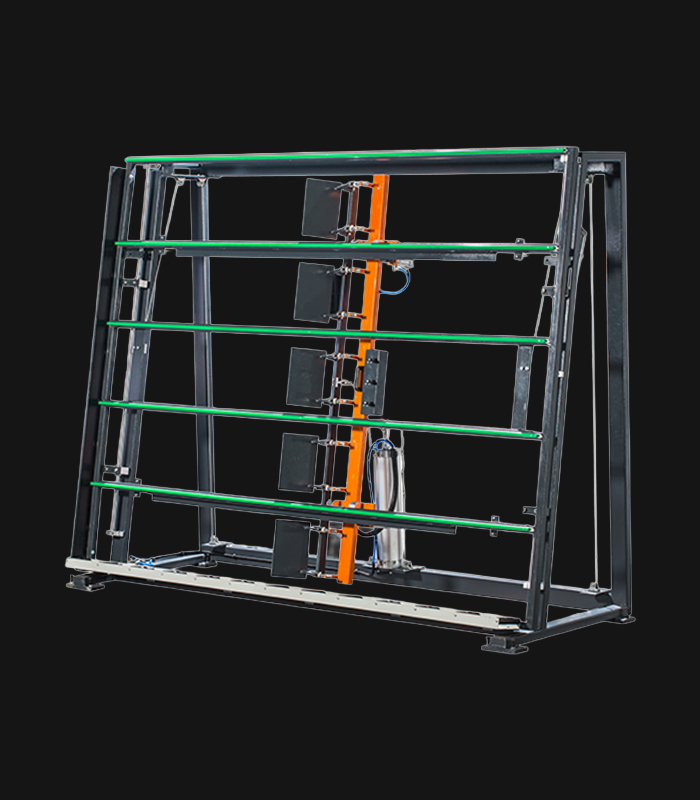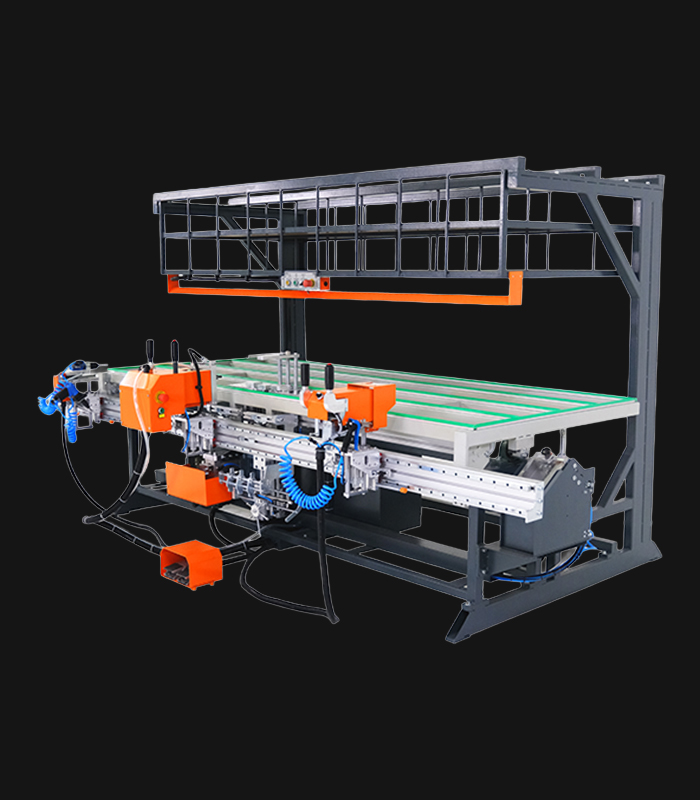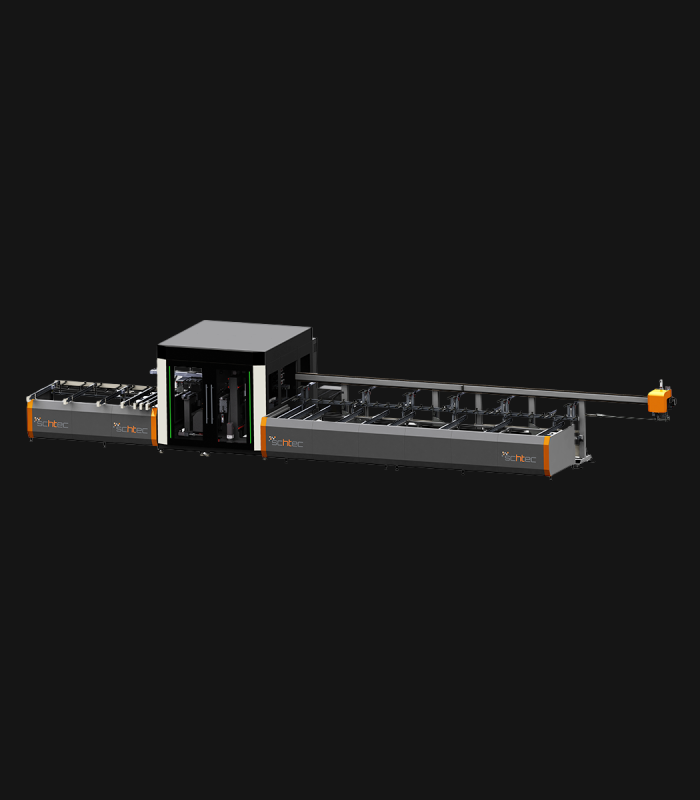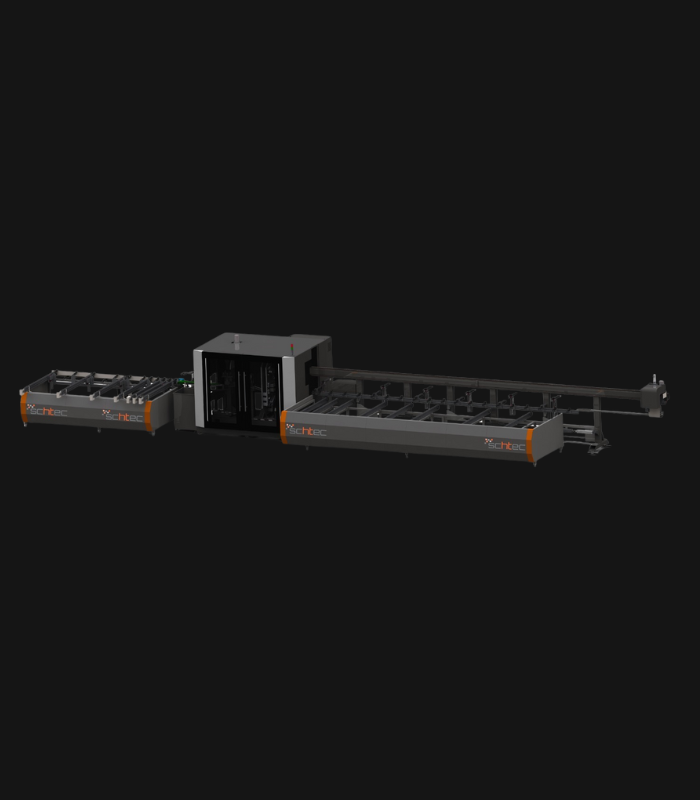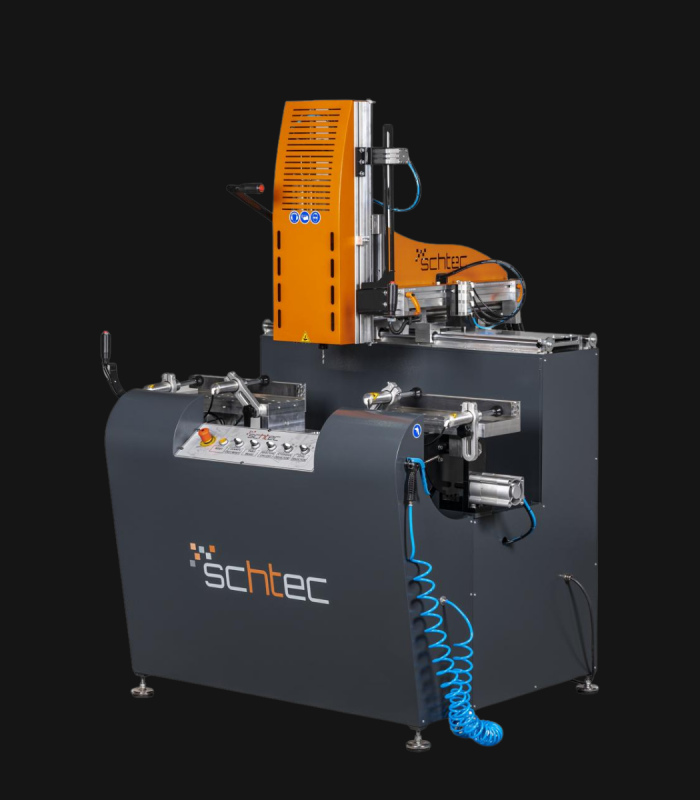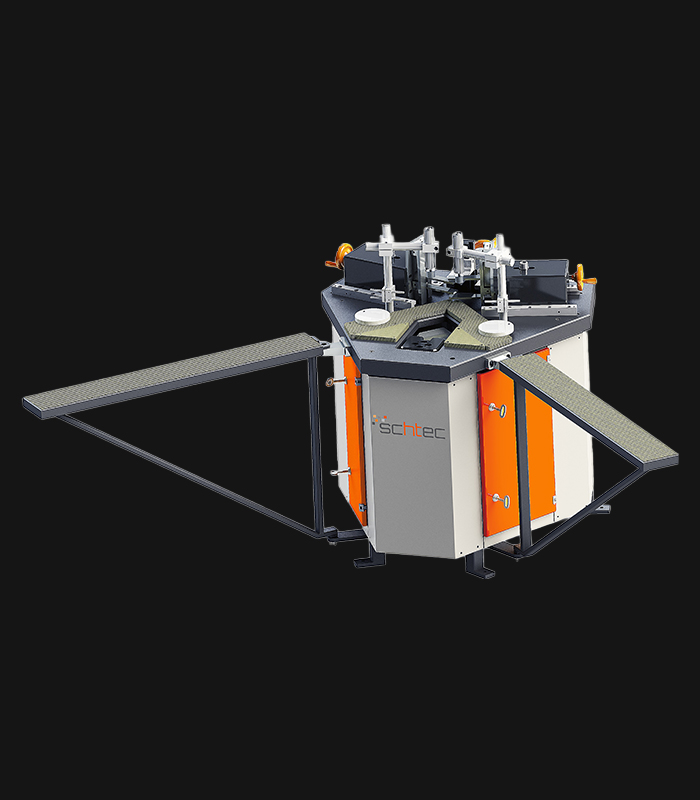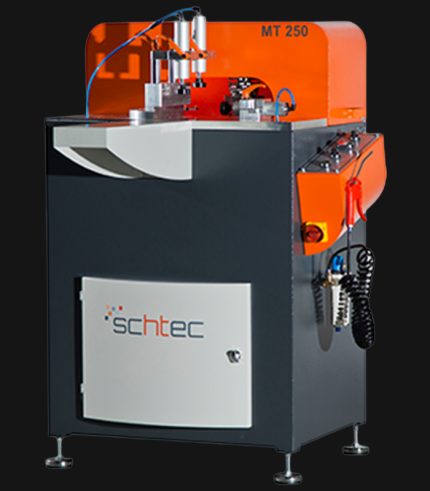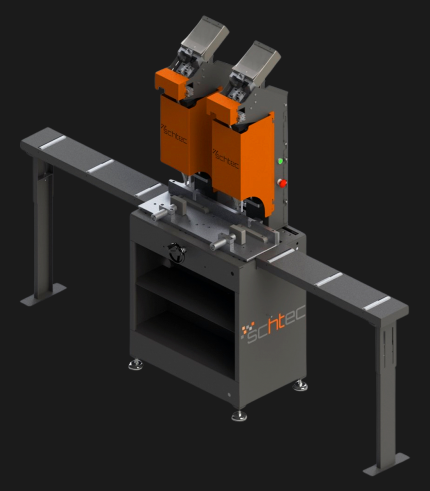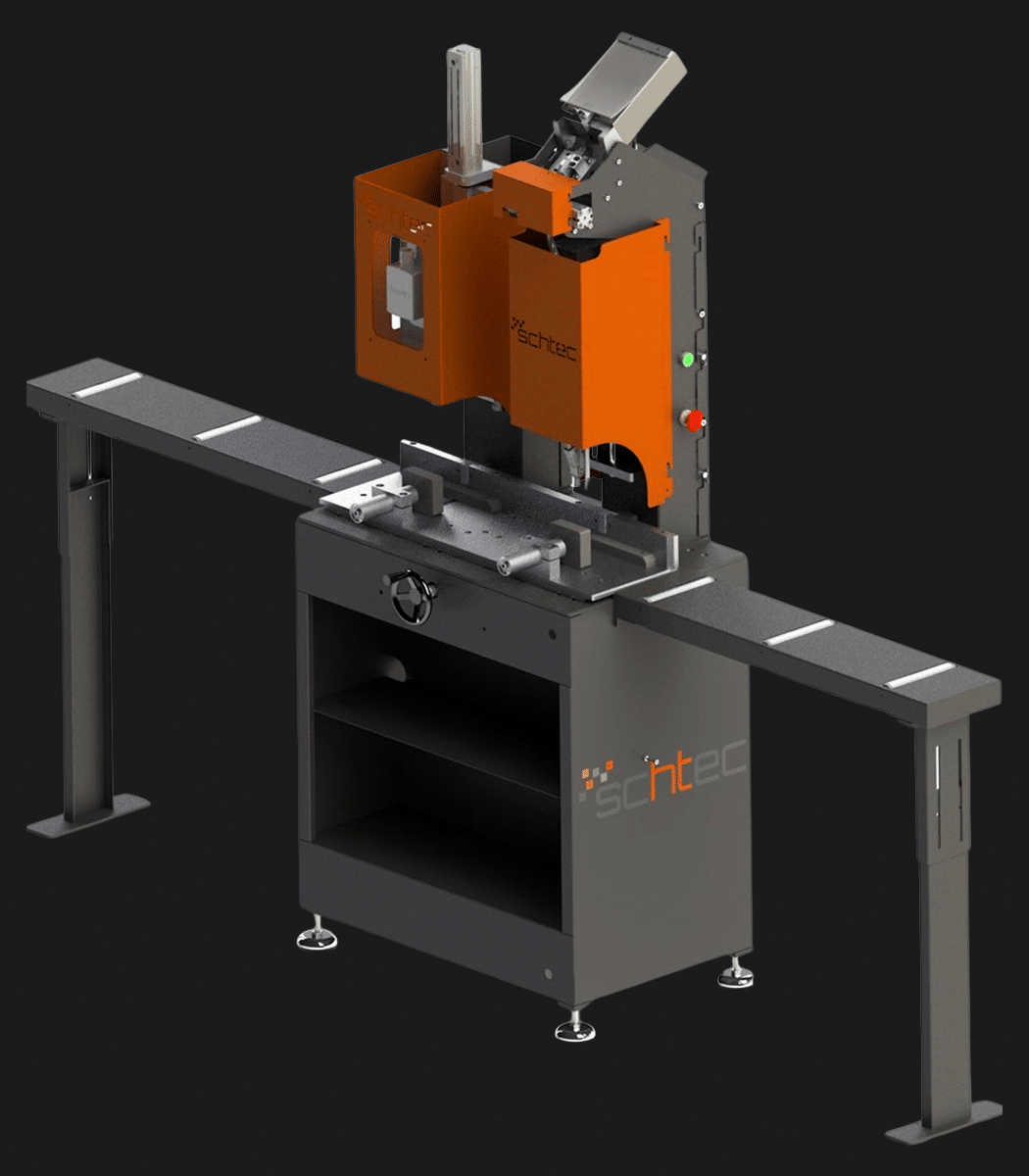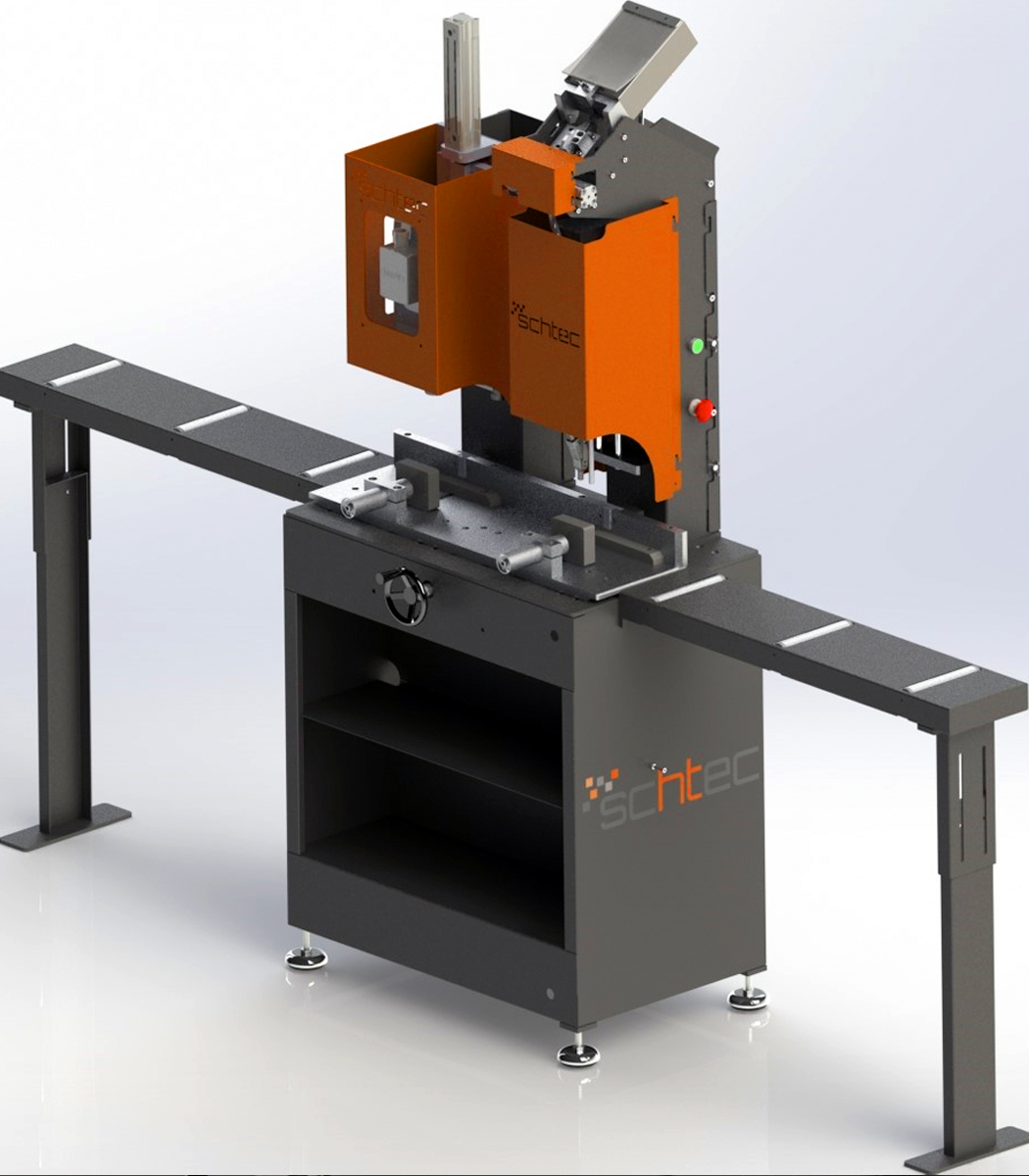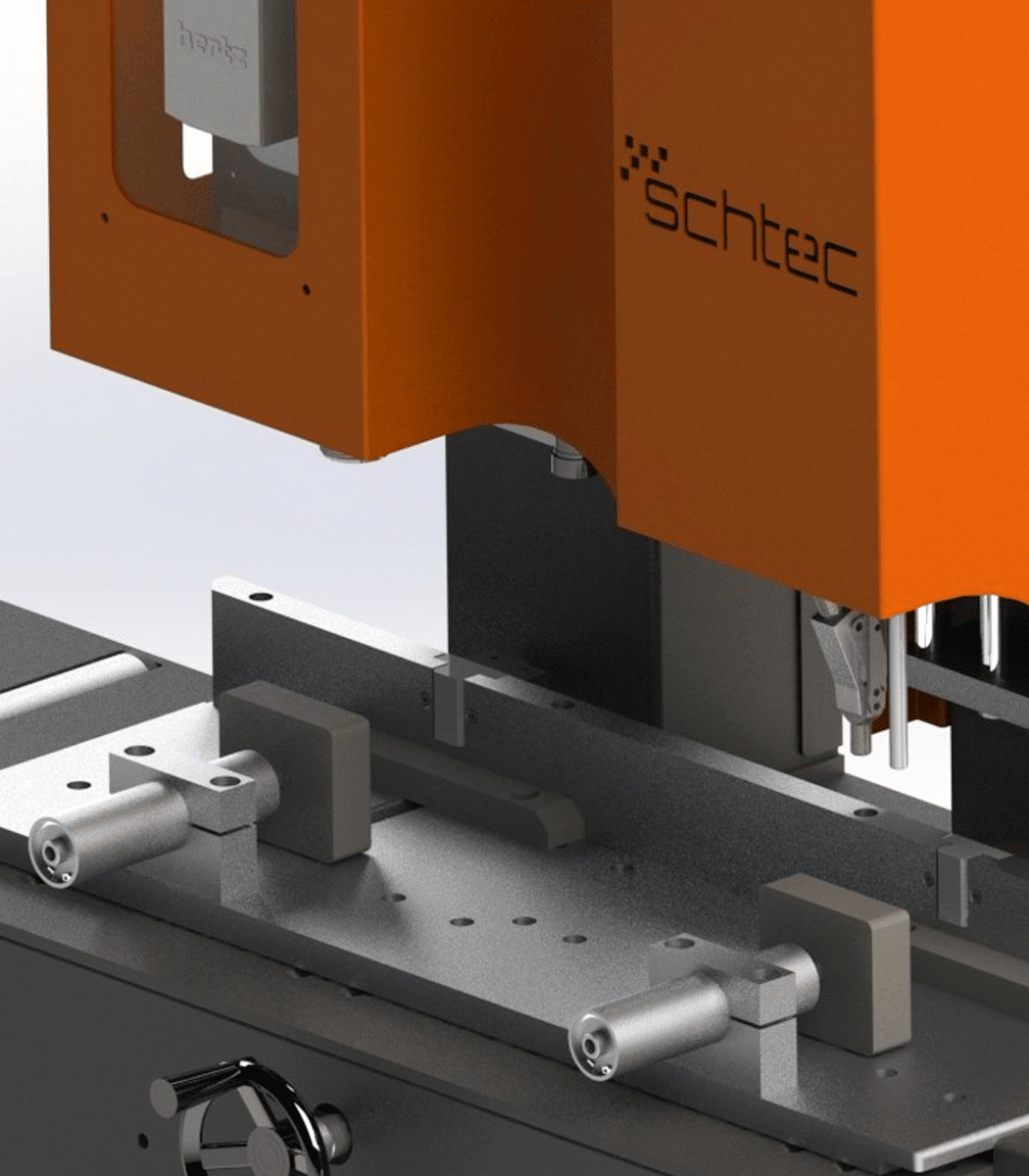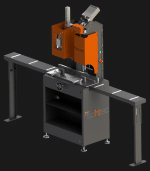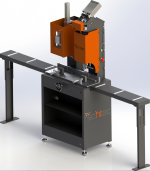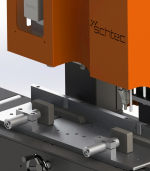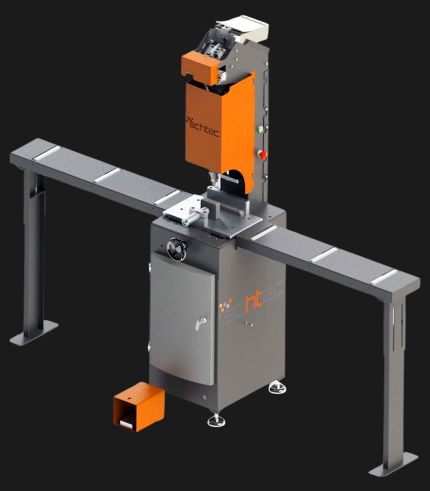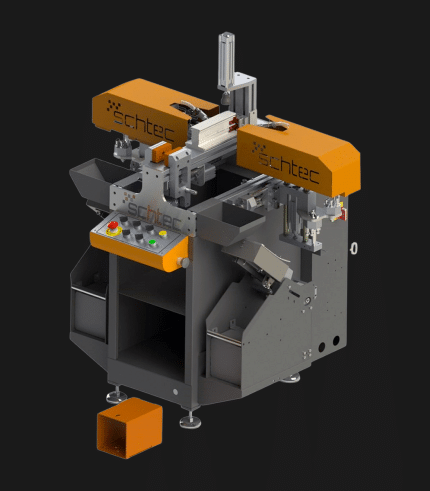RS 173 Reinforcement Screwing and Mounting Hole Drilling Machine
The SCHTEC RS 173 offers fast and precise mounting hole drilling and reinforcement screwing with dual-head operation, pneumatic feeding, torque adjustment, and 1.5 sec/piece speed.
RS 173 Technical Specifications
| Motor Power | 5 kW |
| Voltage | 220 V, 1 Ph, 50-60 Hz |
| Air Pressure | 6-8 bar |
| Air Consumption | 16 lt./min |
| Max. Profile Width | 130 mm |
| Min. Profile Width | 15 mm |
| Machine Height | 2,000 mm |
| Machine Length | 500 mm (2,230 mm with conveyor) |
| Machine Width | 610 mm |
| Machine Weight | 150 kg |
Standard Features
- Pneumatic screw feeding unit
- Mounting hole drilling on the first head; screwing operation on the second head
- Automatic stop after the screwing process
- Foot pedal control for flawless screwing
- Safety switch to prevent faulty operation
- Special height adjustment switch for different screw lengths
- Automatic profile clamping during screwing
- Adjustable range stop with profile support
- Long-lasting bit usage and easy replacement
- Adjustable torque according to screw type
- Average screwing speed: 1.5 sec/piece
Product Description
The SCHTEC RS 173 Reinforcement Screwing and Mounting Hole Drilling Machine combines precision, speed, and safety for efficient PVC and aluminum profile assembly. Featuring dual-head operation—drilling on the first head and screwing on the second—it ensures flawless, automated performance with an average screwing speed of 1.5 seconds per piece. Equipped with a pneumatic screw feeding system, foot pedal control, automatic clamping, and torque adjustment, the RS 173 minimizes operator error while maximizing productivity. Designed for durability and ease of maintenance, it delivers reliable results in high-volume production lines.
Frequently Asked Questions
Find quick answers to common questions about our Fully Automatic Profile Screwing Centers.
1. What is the core function of a profile screwing center in PVC production?
A profile screwing center automatically inserts and tightens screws into PVC profiles at predefined positions, reducing manual effort and errors. It ensures high consistency in hardware mounting across large volumes. These machines are often integrated with profile machining and cutting centers to form a continuous production line. With precise positioning and programmable parameters, they help maintain tight tolerances and uniform assembly quality.
2. What distinguishes RS 225 from other screwing machines in this category?
The RS 225 Profile Screwing Center features dual fully automatic screwing axes that work simultaneously, enhancing throughput and reliability. Servo‑controlled positioning ensures 0.1 mm precision per screwing position. The machine supports loading up to 8 profiles and maintains a database of screwing parameters (up to 10,000 profiles). It also allows for remote diagnostics and is compatible with machining centers in an automated workflow.
3. What advantages does the RS 235 Fully Automatic Screwing Profile Centeroffer?
4. Can these screwing centers adapt to different PVC profile designs and hardware configurations?
5. What maintenance practices help ensure reliability and longevity in screwing centers?
Regular cleaning of screw feeding systems, sensor windows, and guide rails prevents dust or debris from influencing accuracy. Lubrication of moving parts, ball screws, and rack‑pinion mechanisms is essential to reduce wear. Periodic calibration of servo axes and position detection systems keeps tolerances tight. Checking pneumatic lines, seals, and air pressure ensures consistent screw insertion force. Finally, monitoring error logs and remote diagnostics helps preemptively resolve issues before breakdowns occur.

